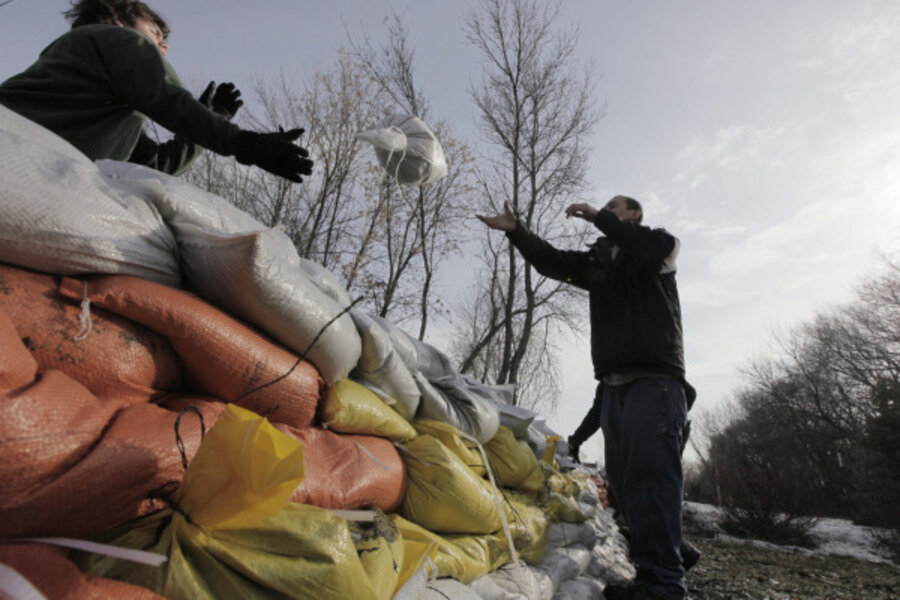What Fargo, N.D., goes through to contain Red River flooding
Loading...
The fortification efforts have mostly stopped in Fargo, N.D., but not without an effort tabulated in earth – 53,000 cubic yards of it. That's how much has been dug up so far to help build levees to thwart the rising Red River, expected to crest 38 feet above flood level by Sunday.
While many parts of the US are at higher risk of flooding this year than usual, according to government forecasters, Fargo has become adept at dealing with invasive waters, especially after last year when the river reached 40.8 feet, its highest flood level ever, killing 91,000 cattle and causing $139 million in damage.
“Flooding is not unusual in our community, but we learned a lot last year and were able to prepare,” says Karena Carlson, communication manager for the city, in a phone interview.
In addition to the 53,000 cubic yards of earth used to build temporary levees (envision 1.1 million bushels of dirt), the city expects to use another 49,000 cubic yards to complete the job by Saturday, says Ms. Carlson. In total, 20.5 miles of dikes, ranging from sandbags to clay, will line the city’s borders in efforts to hold the waters at bay. Fargo is North Dakota's largest city, with about 100,000 residents.
A 7,000-person job, at least
The effort started more than two weeks ago, in anticipation that the river would rise during the spring thaw. Volunteers helped build and prepare sandbag walls. Overall, more than 7,000 people have contributed to the effort, including many high school groups who were bused in to help.
In many cases, sandbags arrived on pallets prefilled or were included in “cul-de-sac kits” delivered to neighborhoods. If residents had to fill the bags themselves, they got strict instructions to fill them halfway and tie them near the top. Bags with loose sand help fill in a dike’s gap, while overfilled bags create worrisome holes.
The city has its own sand reserves, but it needed to order more from local suppliers, says Ken Rhenault, Fargo’s engineering supervisor.
Now the city is waiting and watching as the river rises, sometimes a half-inch each hour, Carlson says. National Guardsmen, local police, and the city’s engineering department are on 24-hour watch, walking and monitoring the dikes for signs of seepage or other problems.
The Red River borders North Dakota and Minnesota and flows northward into Canada. By Friday morning, the river had risen 35.36 feet.
What to do with bags of wet sand?
When this is all over, Fargo will be left with miles of bags full of contaminated sand. But all is not lost, says Mr. Rhenault. Though it will be considered unsafe for playground use, the sand will create immediate reserves for next winter.
“We pay for it, we have it, and we’ll stockpile and use some of it,” he says.





